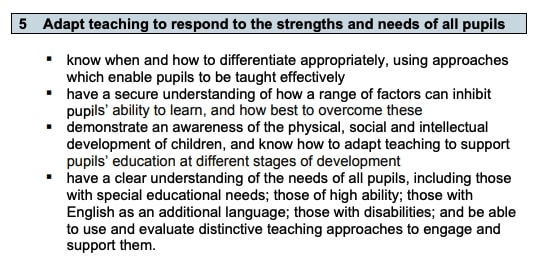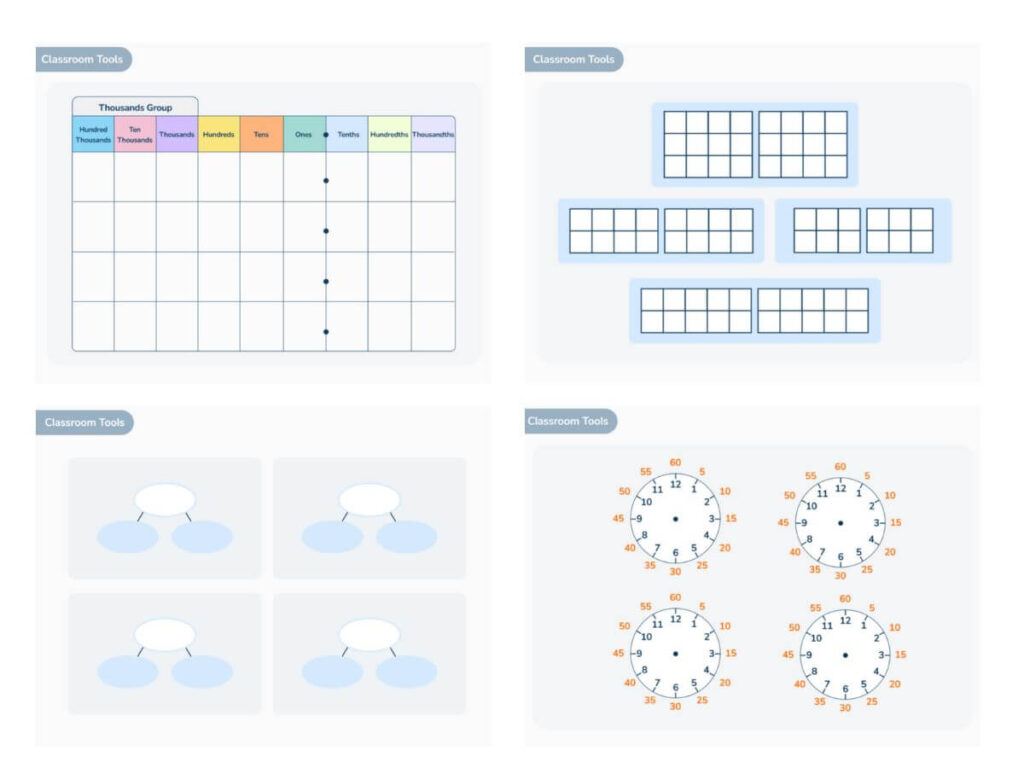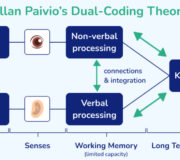Adaptive Teaching: A Practical Step-by-Step Guide
Adaptive teaching adjusts to the pitch, pace and needs of the learner. The Education Endowment Foundation found that improving high-quality teaching for all students will improve outcomes for students with SEND. Unlike differentiation; it aims for the same goals and learning objectives for every pupil, informed by ongoing assessment and data.
This practical guide shows adaptive teaching strategies for primary and secondary education to reduce knowledge gaps and improve long-term student outcomes.
Short on time? Download the adaptive teaching CPD guide for school and maths leaders to implement adaptive teaching across your setting.
Adaptive teaching key takeaways:
- Adaptive teaching means adjusting teaching in real time so every pupil can access the same objectives and succeed.
- Adapt teaching in response to learner needs so that all pupils meet the same learning objectives with high expectations.
- Use formative assessment to identify gaps in prior knowledge and provide targeted support.
- Apply adaptive teaching strategies such as scaffolding and pre-teaching to meet diverse learning needs.
- Follow the Early Career Framework to group pupils effectively and avoid creating distinct tasks or unnecessary workload.
- Build inclusive classrooms where learners work towards the same goals.
What is adaptive teaching?
Adaptive teaching is a teaching approach where teachers adjust lesson content, pace and support in real time so all pupils can meet shared learning objectives. It uses formative assessment to respond to diverse learning needs, maintaining high expectations and helping every learner access the same curriculum.
Adaptive Teaching CPD Guide For Schools
Implement adaptive teaching strategies CPD across your school or department to help teachers meet student needs and improve attainment.
Download Free Now!Adaptive teaching and the teaching Standards
Adaptive teaching requires teachers to use formative assessment to continually check learners’ strengths and needs, then adapt teaching so all pupils meet expectations.
As set out in standard 5 of the ‘Teacher’s Standards,’ educators must ‘adapt teaching to respond to the strengths and diverse learning needs of all pupils.’
While technology can help with assessment and personalisation of adaptive teaching, it is not essential.
How adaptive teaching works in classrooms
Teachers adapt their teaching in real-time using formative assessment to check pupils’ understanding. They scaffold learning and starting points, use flexible and temporary grouping, and adjust explanations or examples to match pupils’ prior knowledge.
These adaptive teaching strategies ensure all learners master key concepts while teachers maintain high expectations for every pupil.
Adaptive teaching vs. differentiation
Adaptive teaching focuses on the whole class in real time. Teachers respond to what pupils show in the moment, maintaining high expectations and providing the appropriate support so everyone works towards the same learning objectives.
Differentiation typically happens ahead of time. Teachers pre-plan variations for the learning needs of individuals, often resulting in different tasks and resources.
What differentiation involves
- Lesson content
- Processes
- Desired outcomes of the lesson
All classes include pupils with different starting points and prior attainment, so some level of differentiated instruction may be present in every lesson. However, pre-planning for different groups has been under increasing scrutiny.
Over-reliance on differentiation increases workload
Differentiation for learning became a policy in many schools. It led to increased teacher workload due to preparing multiple worksheets and resources before the lesson at different levels (e.g., “All, Most, Some” or “Must, Should, Could”). The aim was to set personalised starting points, but it often meant pupils completed different tasks, producing uneven learning outcomes.
Unintended consequences of traditional differentiation
Differentiation could sometimes have unintended consequences, such as:
- Lowering expectations
- Lowering academic achievement and academic outcomes for some
- Widening the knowledge gaps between learners
- Increasing teacher workload
Why many see adaptive teaching as an evolution
Effective adaptive teaching creates more inclusive classrooms by responding to the distinct needs of all students.
The term adaptive teaching has been in use for years and features in both the Department for Education’s Teachers’ Standards and the Early Career Framework.

In the DfE Teachers’ Standards, much of the language and recommendations are often vague, and some of them seem to promote adapting to learning styles, which has no evidential support. The Early Career Framework is clearer and worth reading.
Adaptive teaching in the Early Career Frameworks
The Early Career Framework (ECF) sets clear expectations for how teachers should approach adaptive teaching during their early years in the classroom.
It builds on the Teachers’ Standards and defines what adaptive teaching requires teachers to understand, apply and refine in their daily teaching practice.
What the ECF says
Under Standard 5, early career teachers learn that:
| 1. Pupils are likely to learn at different rates and to require different levels and types of support from teachers to succeed. 2. Seeking to understand pupils’ differences, including their different levels of prior knowledge and potential barriers to learning, is an essential part of teaching. 3. Adapting teaching in a responsive way, including by providing targeted support to pupils who are struggling, is likely to increase pupil success. 4. Adaptive Teaching is less likely to be valuable if it causes the teacher to artificially create distinct tasks for different groups of pupils or to set lower expectations for particular pupils. 5. Flexibly grouping pupils within a class to provide more tailored support can be effective, but care should be taken to monitor its impact on engagement and motivation, particularly for low attaining pupils. 6. There is a common misconception that pupils have distinct and identifiable learning styles. This is not supported by evidence and attempting to tailor lessons to learning styles is unlikely to be beneficial. 7. Pupils with special educational needs or disabilities are likely to require additional or adapted support; working closely with colleagues, families and pupils to understand barriers and identify effective strategies is essential. Early Career Framework – Department for Education |
How teachers can apply the ECF guidance
Teachers are expected to:
| Develop an understanding of different pupil needs, by: Identifying pupils who need new content broken down further.. Making use of formative assessment. Working closely with the Special Educational Needs Co-ordinator (SENCO) and special education professionals and the Designated Safeguarding Lead. Using the SEND Code of Practice, which provides additional guidance on supporting pupils with SEND effectively. Provide opportunity for all pupils to experience success, by: Adapting lessons, whilst maintaining high expectations for all, so that all pupils have the opportunity to meet expectations. Balancing input of new content so that pupils master important concepts. Making effective use of teaching assistants. Meet individual needs without creating unnecessary workload, by: Making use of well-designed resources (e.g. textbooks). Planning to connect new content with pupils’ existing knowledge or providing additional pre-teaching if pupils lack critical knowledge. Building in additional practice or removing unnecessary expositions. Reframing questions to provide greater scaffolding or greater stretch. Considering carefully whether intervening within lessons with individuals and small groups would be more efficient and effective than planning different lessons for different groups of pupils. Group pupils effectively, by: Applying high expectations to all groups, and ensuring all pupils have access to a rich curriculum. Changing groups regularly, avoiding the perception that groups are fixed. Ensuring that any groups based on attainment are subject specific. Early Career Framework – Department for Education |
Key points from the Early Career Framework
- The ECF can be summarised in a few essential ideas:Understand the unique needs of your diverse learners and provide targeted support;
- Monitor impact and engagement using assessment for learning to improve outcomes for all pupils
- Consider how the students’ previous learning may impact their current learning
- Recognise and respond to the needs of diverse learners through ongoing, adaptive practice
- Maintain high expectations for all students
- Use flexible grouping and targeted support to help every pupil succeed
- Avoid over-planning or creating unnecessary workload; good adaptive teaching focuses on what happens in the moment
- Monitor impact and engagement using assessment for learning to improve outcomes for all pupils
Looking for resources to support your pupils? Explore the Third Space Primary Maths Hub, or our Secondary Resource Library.
The importance of adaptive teaching
Every pupil has unique learning needs. Adaptive teaching allows teachers to identify and address these learning needs in real time.
By providing appropriate support and targeted adaptations, teachers can help all learners achieve the same curriculum goals.
Why adaptive teaching matters
- Promotes equity in education by helping every learner access the same content.
- Ensures high-quality teaching for all, not just those who need extra help.
- Helps teachers improve outcomes and reduce knowledge gaps between pupils.
- Builds inclusive classrooms that celebrate diversity and maintain high expectations.
How adaptive teaching improves student outcomes
Good adaptive teaching complements the wider curriculum and helps pupils master essential skills and concepts.
When teachers adapt lessons based on assessment and prior knowledge, they can anticipate misconceptions and intervene early.
This reduces the risk of pupils falling behind, supports academic achievement, and improves long-term student outcomes across both primary education and secondary education.
Adaptive teaching in practice at Third Space Learning
At Third Space Learning, adaptive practice is central to how our personalised one-to-one online tuition programmes support pupils.
Each learner begins their one-to-one maths session with a Skill Check In to identify their starting points and critical knowledge gaps.
From there, AI tutor Skye adapts teaching in real time, providing scaffolding, verbal modelling, and independent practice as needed.
If a pupil shows strong understanding, Skye moves them quickly to challenge questions. If not, it provides additional pre-teaching and scaffolding to rebuild confidence and close gaps.
Every AI maths tutoring session ends with a Skill Check Out and Confidence Check, giving teachers and leaders insight into each pupil’s progress.
This adaptive cycle reflects what effective teachers do every day: using assessment, feedback, and flexibility to help learners progress and maintain high expectations.
Ongoing training and prompt updating from expert humans in the AI loop ensure Skye uses the most up-to-date teaching strategies, methodologies and pedagogies to reflect pupils’ learning in class.

An example assessment question from Third Space Learning’s online one to one maths tutoring programme.
Adaptive teaching tips
Embedding adaptive teaching strategies into everyday teaching practice can be challenging, especially for early career teachers.
However, most effective teachers are already using elements of adaptive teaching naturally.
Here’s how to strengthen these strategies at each stage of a lesson: before, during, and after.
Before the lesson
1. Know your learners
- Review prior knowledge and identify any special educational needs or EAL pupils who may need additional support.
- Use assessment data and classwork to understand pupils’ starting points.
- Check for critical knowledge gaps that could affect progress.
2. Anticipate barriers to learning
- Identify new or special vocabulary pupils may need to understand the lesson.
- Note common misconceptions and areas likely to need scaffolding or pre-teaching.
- Consider how TAs can support individual pupils effectively.
- Prepare appropriate support materials, short texts, visuals, or differentiated worksheets, without unnecessary workload.
During the lesson
1. Use formative assessment techniques
- Ask diagnostic questions, use hinge questions, mini-whiteboards, or quick low-stakes tests.
- Observe pupils’ understanding in real time, identify what they know during the lesson, not after it.
- Use this feedback to decide when and how to adapt teaching on the spot.
2. Make in-the-moment adaptations
- Read aloud, model examples, or use a visualiser to clarify lesson content.
- Scaffold learning by breaking down complex ideas and removing supports as understanding builds.
- Add non-examples, analogies, or concrete representations to reinforce meaning.
- Encourage peer support and collaboration to deepen learning.
Tip: What benefits one learner will likely benefit them all, adaptive teaching strategies lift the whole class.
3. Use flexible grouping
- Group learners effectively for targeted support, ensuring flexibility and rotation to avoid fixed ability sets.
- Involve TAs in the moment, they often know pupils’ learning habits best and can help adjust support instantly.
After the lesson
1. Reflect and act on what you’ve learnt
- Review lesson outcomes: Did all learners achieve the lesson objectives?
- Identify pupils needing more support and those ready for further challenge.
- Use insights to plan lessons, refining your adaptive practice based on data and observation.
2. Maintain high expectations
- Celebrate progress, even small steps, while ensuring the same curriculum standards for all.
- Share successful teaching strategies across the team or department to promote consistency.
Adaptive teaching in action at Third Space Learning
In Third Space Learning’s one-to-one online maths tutoring sessions, AI tutor Skye applies the same principles:
- Uses assessment at the start of each lesson to identify pupils’ existing knowledge.
- Provides scaffolded instruction and targeted support in real time.
- Adapts lesson content dynamically, offering pre-teaching when required.
- Builds independence through guided practice and independent practice, maintaining high expectations throughout.
This cycle of adapt–teach–reflect mirrors how good adaptive teaching works in every classroom: responsive, inclusive, and focused on helping all learners achieve their goals.

Benefits of adaptive teaching
The 2015 PISA results showed that adaptive instruction is one of the approaches most positively correlated with student performance.
The Education Endowment Foundation shows that improving high-quality teaching benefits all learners, especially those with SEND.
Key benefits of adaptive teaching
- Personalised learning experiences; lessons adapt to individual learning needs in real time
- Immediate identification of gaps through assessment and responsive teaching
- Increased engagement and motivation, as pupils receive the right level of challenge and support
- Targeted and effective instruction, helping learners reach shared curriculum goals
- Flexible pacing, allowing pupils to work towards mastery and independent practice
- Evidence-based teaching strategies, using classroom data to inform planning
- Improved academic outcomes and stronger progress across different groups
- Reduced teacher workload, as adaptations happen in the moment rather than through pre-prepared different tasks
- Supports diverse learners, particularly pupils with SEND in mainstream schools
Disadvantages of adaptive teaching
While adaptive teaching strategies are effective, they can also present challenges for teachers and schools.
Understanding these limitations helps maintain high expectations and balance teacher workload.
Common challenges
- Time investment: Teachers and teaching assistants may need time to adjust to new teaching practices and tools
- Technology costs: Adaptive approaches using data may require different resources and training
- Over-reliance on technology: Tools can fail; keep pedagogy first
- Inequality risks: Pupils without equal access to devices or support may be disadvantaged, especially in mainstream schools
Adaptive teaching strategies
There are many helpful tools and strategies available to ensure that adaptive teaching provides learners with the appropriate support but does not increase teacher workload.
1. Mini-whiteboards
Small dry erase boards are perfect for formative assessment and instant feedback, they can give incredible insight into the level understanding of the whole class.
When activities and questions are planned carefully and the data gathered is used effectively, mini whiteboards can be invaluable tools for any classroom.
2. Visualisers
Visualisers are a great way of modelling problems for a class to show them exactly what they need to write in order to be successful. They can also be used to share a learner’s work with the wider class to demonstrate a particularly effective method or a common misconception.
3. Graphic organisers
Graphic organisers and knowledge organisers are useful visual aids to show connections between concepts. They have been proven to improve comprehension and retention of information. Learners could create their own as part of their learning over time.
4. Teaching assistants
Knowing your class is very important to ensure that the correct support is provided for them. If you have teaching assistants in your class they may know certain learners better than you. Using them to their full potential and involving them in the planning stages is an important Adaptive Teaching strategy that must not be forgotten.
5. Word banks
Identify the key vocabulary pupils will need to understand in order to access the lesson. Consider displaying them clearly on the whiteboard or creating print outs that pupils can refer to. This doesn’t need to be time-consuming and can be particularly supportive for pupils with EAL and SEND.
Adaptive teaching examples
Here are some scenarios where adaptive teaching in action can result in achieving the desired lesson objectives for all learners.
1. A lesson on construction
Problem: The teacher sees that some learners are struggling to remember the steps required for an angle bisector and are unable to follow a list of instructions.
Solution: The teacher is able to use a visualiser to record themselves or another learner carrying out the steps and then projects the recording on loop. The struggling learners are able to rewatch the steps and use the model to successfully carry out the process themselves.
2. A lesson on inequalities
Problem: Some learners are confusing the < and > symbols.
Solution: The teacher displays this image. Using a concrete, diagrammatic representation consolidates the understanding of all learners.

3. A lesson on trigonometry
Problem: A number of students are getting the same wrong answers for missing values in a right angled triangle.
Solution: The teacher uses mini-whiteboards to do an on-the-spot assessment of understanding. The teacher then writes a step-by-step procedure on the whiteboard for learners to follow, followed by another mini-whiteboard assessment. The teacher can then remove the steps from the board and quiz students again at the end of the lesson using the mini-whiteboards.
Taking a whole-school approach to adaptive teaching
Successful adaptive teaching is easier and more effective teaching stratgey when supported across the whole school.
Senior leaders can help by making time to discuss adaptive teaching as a team or dedicate an INSET session to build confidence and consistency.
A shared understanding of adaptive teaching vs. differentiation is essential. Misconceptions can lead to extra workload or lower expectations.
When implemented well, adaptive teaching strategies close knowledge gaps rather than create them, helping pupils in both primary and secondary schools make better long-term progress
If we change our thinking from task design and differentiated outcomes towards the principles of adaptive teaching strategies, learners in primary school and secondary school can receive high quality teaching and make better long term progress, alongside their peers in the classroom.
Key discussion points
- How well known is the term adaptive teaching across the school?
- What assumptions still exist around differentiation and adaptive teaching?
- What evidence shows adaptive teaching improves learning outcomes?
- What will motivate staff to sustain new approaches?
- What simple first steps can all teachers start with?
Adaptive teaching resources available from Third Space Learning
Third Space Learning offers a library of classroom and tutoring resources designed to support adaptive teaching strategies in both primary and secondary schools.
GCSE Maths Revision Guides
Each GCSE Maths Revision Guide includes step-by-step procedures and scaffolding to help learners build confidence. Worked examples highlight common misconceptions, and multiple-choice questions allow teachers to check understanding quickly.
GCSE Diagnostic Questions
Use GCSE diagnostic questions to assess pupils’ knowledge, identify misconceptions and plan targeted support. These quick checks help teachers adapt lessons more effectively.
KS1 and KS2 Diagnostic Quizzes
Assess understanding before or after a sequence of lessons with KS1 and KS2 Diagnostic Questions. Responses reveal pupils’ starting points and learning needs, helping teachers adapt future lessons.
Hinge questions
Hinge questions test all pupils’ thinking at a single point in a lesson. Their responses guide whether to recap or move on, supporting high-quality teaching through real-time decisions.
Adaptive teaching helps all pupils learn the same core concepts, avoiding the pitfalls of over-planned differentiation.
By focusing on responsive teaching instead of task design, teachers can close gaps and promote better long-term progress across the class.
READ MORE:
- Whole Class Feedback
- How Skye, The AI Voice Tutor, Uses Adaptive Teaching Just Like Traditional Tutors
- How To Use AI For Maths: A Practical Guide For Teachers And Heads of Department
- Intelligent Tutoring Systems: 7 Research-Backed Principles for Building an Effective AI Tutor
- The 11 Best AI Tutors: A List of The Top AI Tutoring Platforms For Schools And How They Compare
Adaptive teaching FAQs
What makes adaptive teaching effective?
Adaptive teaching is a highly effective method as it provides tailored learning experiences for each student. By utilising technology, continuous assessment, and data analysis, teachers can identify areas where learners may require additional support to achieve their objectives. The adaptable grouping of students also creates an optimal learning environment, resulting in improved learning outcomes for all individuals.
Adaptive instruction in the classroom is a personalised teaching approach that utilises continuous assessment and targeted resources to support students in achieving their learning objectives. Additionally, this approach allows for flexible grouping of students and seeks to enhance student engagement, motivation, and learning outcomes.
Adaptive teaching is a teaching stratgegy where teachers make real-time adjustments to teaching based on learner responses, ensuring they receive the support they need to access the national curriculum. Adaptive teaching means holding all learners to the same high expectations set out by the teachers with differing layers of support.
DO YOU HAVE STUDENTS WHO NEED MORE SUPPORT IN MATHS?
Skye – our AI maths tutor built by teachers – gives students personalised one-to-one lessons that address learning gaps and build confidence.
Since 2013 we’ve taught over 2 million hours of maths lessons to more than 170,000 students to help them become fluent, able mathematicians.
Explore our AI maths tutoring or find out about maths intervention programmes for your school.







